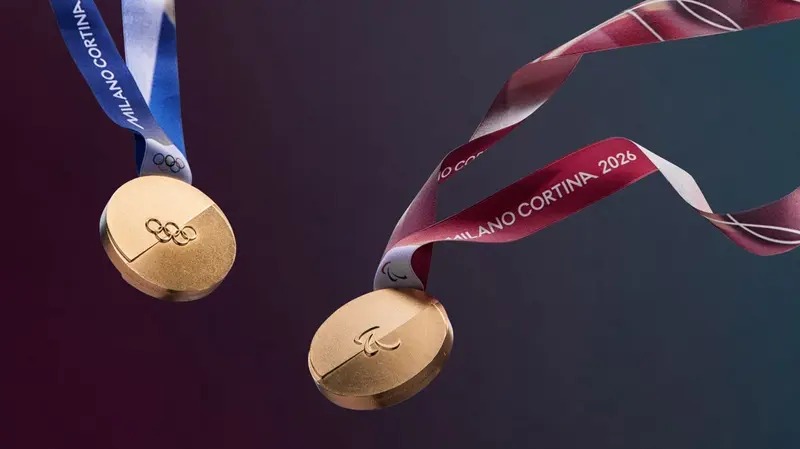The Palazzo Balbi in Venice recently unveiled the for the upcoming Winter Olympic and Paralympic Games. According to the Italian National Olympic Committee, these events will take place in February and March of next year in Milan and Cortina. Notably, this marks the first time in history that a Winter will be held simultaneously in two cities.
The design of the gold, silver, and bronze medals for the upcoming games was crafted by the creative team of the organizing committee (Fondazione Milano Cortina 2026), along with the Italian State Mint and the Institute for Printing and Minting (IPZS).
What meanings lie behind this design?
A multidisciplinary team led by Rafaella Pagnè, the director of branding and design for the Winter Olympics and Paralympics, drew inspiration from the Italian avant-garde of the 1960s and 1970s. This movement included the architectural group Superstudio, as well as designers Ettore Sottsass and Alessandro Mendini. As a result, we can expect each medal to be a work of art, as promised by the design developers.
They were also captivated by the idea of duality. Both the obverse (front side) and reverse (back side) of the medal feature two halves that are connected yet cut at an angle. One half has a polished texture, while the other is matte. This symbolizes the athletes’ efforts on one side and the support team that makes it possible to triumph in the world’s most significant sporting event on the other.

“We wanted the design to reflect the idea that victory is never a solitary moment—it is achieved through collective strength, support, and unity,” explained Ms. Pagnè. “This story lives on the surface of the medals, where the two textures meet and begin a narrative created not only by the athletes but also by everyone who helped them in their achievement,” she added.
This shared effort is further emphasized by the five intertwined , which seem to bond the split obverse. The slightly raised edges of the halves give the medal a sense of movement and dynamism, as reported by Dezeen.
In total, the IPZS will produce 1,146 medals. The process will be as environmentally friendly as possible. These elegant and striking awards will be made from leftover gold, silver, and bronze from the mint’s own production. The induction furnaces used in creating the medals will operate solely on renewable energy sources.

And speaking of duality, “Like the Olympic torches, the medals are the perfect synthesis of design and tradition,” said Attilio Fontana, president of the Italian region of Lombardy, where the games will take place.
Among other design developments for the 2026 Winter Olympics that have been previously announced are an angular logo chosen through public voting and two torches designed by Carlo Ratti.
